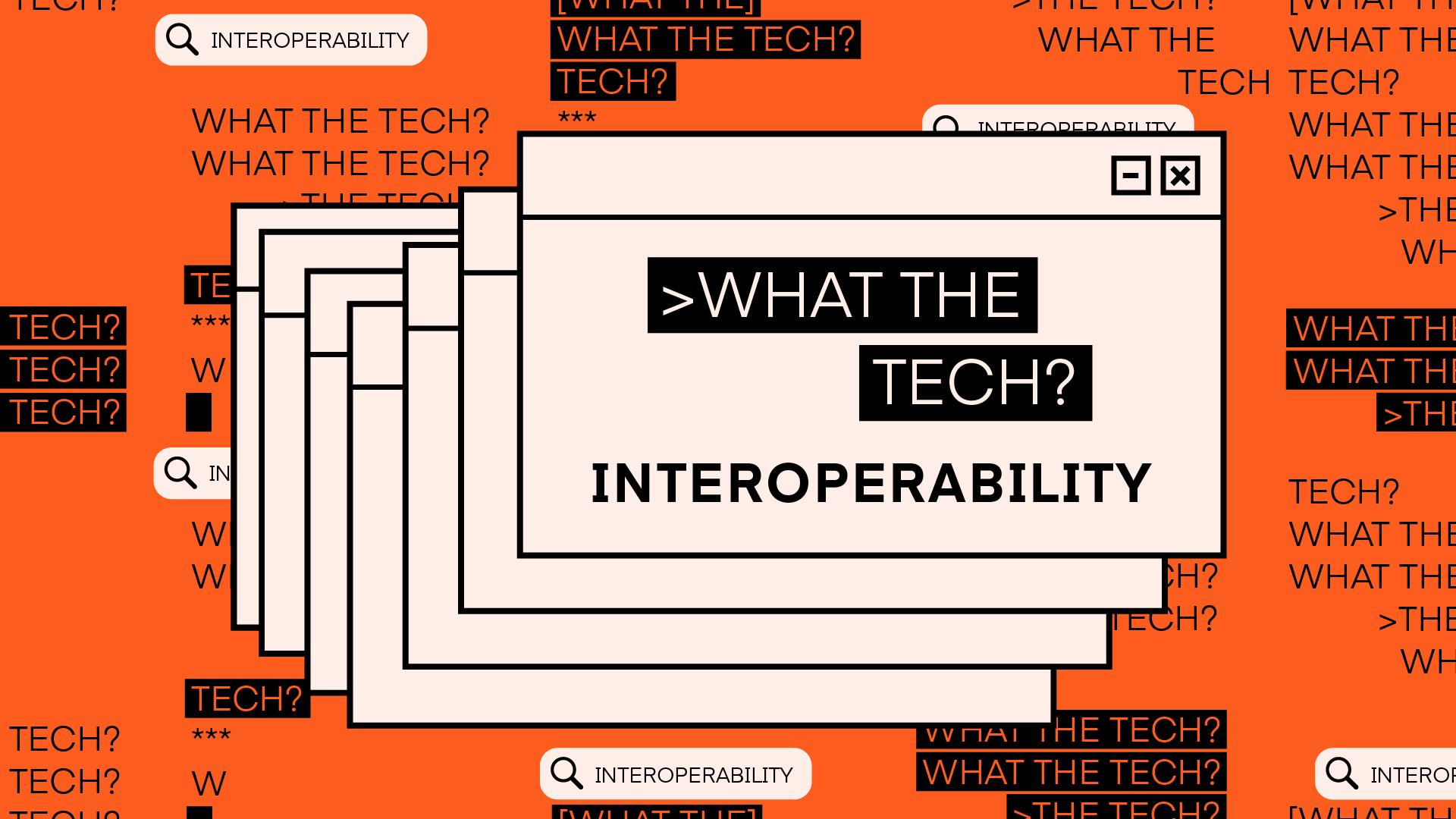What the Tech is interoperability?

You may have heard that the advertising community is bracing for the end of third-party cookies. While several browsers have blocked them for years, Google Chrome, the world’s most dominant browser, with a global market share of 64 percent, announced it will sunset cookies in 2024. The tech company says it will start the phaseout in the first quarter, migrating 1 % of Chrome users to Privacy Sandbox and disabling third-party cookies for them. It plans to complete this deprecation for all users by the end of 2024.
It's a major change for the advertising industry, which for years has relied on these little pieces of software code to build and measure digital ad campaigns. Cookies were never a perfect solution for ad targeting, but they were a way for all publishers and brands to reach consumers, and for consumers to access their favorite sites without having to log in repeatedly.
That’s why interoperability is now a big focus for the ad industry.
First, let’s define interoperability.
Interoperability is the ability for separate technology systems to effectively communicate and share data with one another. Each tech platform is a distinct entity, with its own coding language and database protocols. Interoperability allows these disparate platforms to talk to one another.
Interoperability isn’t exclusive to advertising; it applies to all forms of digital technology. When you receive a Zoom invite, and the invite auto-populates an event on your Google Calendar, you’re experiencing interoperability. Zoom and Google Calendar are independent applications, owned and operated by different companies, but they are interoperable with each other, which helps users. Another example is when you use your Facebook account to log in to and create a user profile on a website that isn’t Facebook.
In the cases above, interoperability is achieved by using application programming interfaces (APIs). APIs are like translators — they allow one software program to talk to another, even if they don’t speak the same programming language. Many major platforms offer APIs so that their services can work seamlessly with other popular tech applications. Interoperability benefits consumers in this way, allowing for a more seamless flow of information and creating a smoother user experience.
OK. I get that. So, what’s going to replace the third-party cookie?
The advertising industry knows it needs an upgrade from cookies via a new currency that’s similarly interoperable but also privacy conscious.
For this reason, many in the industry have worked on creating identity solutions, including Unified ID 2.0 (UID2), RampID, and Core ID. And those currencies need to be interoperable between demand-side platforms (DSPs), customer data platforms (CDPs), and supply-side platforms (SSPs).
A widely adopted interoperable currency can allow advertisers and publishers to speak the same language, connecting buyers and sellers in a seamless way. It also means a more efficient supply chain — a definite upgrade from cookies — that allows advertisers better insight into the effectiveness of their campaigns.
I see. Why is interoperability important for the open internet?
Increased interoperability would allow brands to have a more holistic view of their advertising campaigns. In an ideal scenario, marketers would be able to buy ads across a broad range of sites and have insight into how their various ad placements work together to influence consumers and drive conversions. This is something that is currently feasible across the open internet — but it doesn’t encapsulate a full view of campaigns running on walled gardens.
Walled gardens inhibit this cross-channel view. Advertisers can’t use their YouTube advertising data to inform their advertising strategy on display ads purchased through a non-Google DSP, for instance. The brand also can’t conduct accurate frequency capping and ensure they’re not overwhelming consumers with the same ad across different websites. (Talk about ad nauseam.) This creates ad waste for brands and annoyance for consumers. We explain more about this in “What the Tech Are Walled Gardens?”.
You might ask yourself, What does interoperability mean for consumers? The major consumer tech platforms — Apple, Facebook, Google, and Amazon, to name just a few — have become so large and wield so much influence that they can potentially stifle competition. Without healthy competition, consumers don’t receive the best possible product and experience. That’s why some major platforms are facing antitrust pressure to be more interoperable and more open with their data. Interoperability is at the heart of the open internet — underpinned by new identity solutions to replace and improve upon cookies — enabling marketers to port their data between platforms and glean clear insights into how their ads are performing across the digital ecosystem in a privacy-conscious way.
The Current is owned and operated by The Trade Desk, Inc.
Subscribe to The Current
Subscribe to The Current newsletter